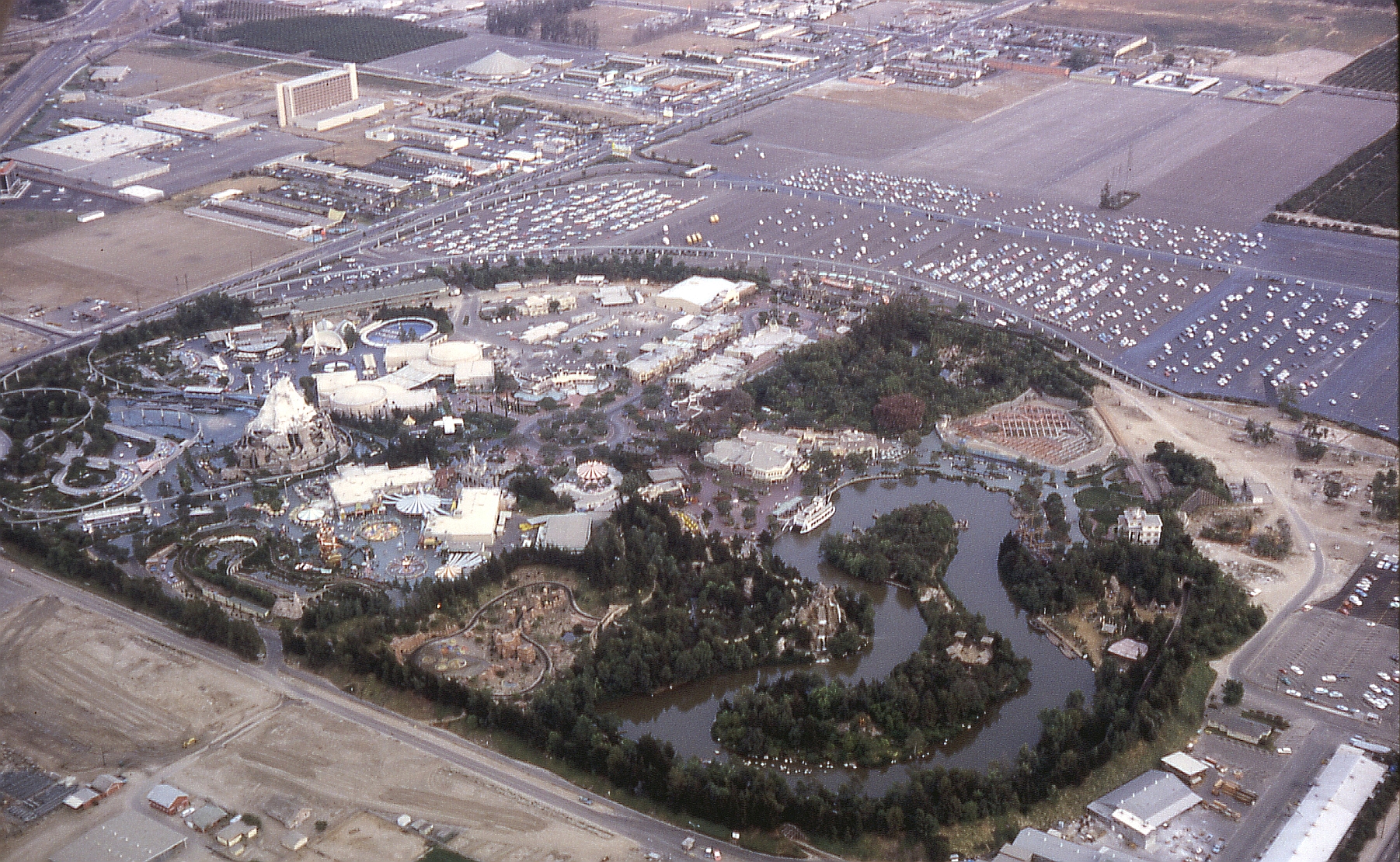Q&A: What Disney can teach us about urban planning

 Can you imagine walking under the arches of the first Disneyland in 1955? Walt Disney manifested a magical world unlike anything seen before. I imagine having the feeling that anything is possible, that magic exists as long as we believe in it. I imagine this feeling because I have never actually felt it. By the time I was born, “Disney” meant “Disneyfication”. The Magic Kingdom meant waiting in line for hours just to order a coffee from a fake Italian town that turns out to be the exact coffee sold in the fake French town and the fake Moroccan town. You get my point.
Can you imagine walking under the arches of the first Disneyland in 1955? Walt Disney manifested a magical world unlike anything seen before. I imagine having the feeling that anything is possible, that magic exists as long as we believe in it. I imagine this feeling because I have never actually felt it. By the time I was born, “Disney” meant “Disneyfication”. The Magic Kingdom meant waiting in line for hours just to order a coffee from a fake Italian town that turns out to be the exact coffee sold in the fake French town and the fake Moroccan town. You get my point.
But behind the typical reaction to Disneyfication today – the fear of homogenous design and pseudo-historic private spaces posing as public spaces - there is the more complicated story of how the Disney empire came to be, and what this has meant for contemporary urban design.
Jennifer Gray is a historian of modern art and architecture specializing in the relationships between progressive social politics and the built environment. Gray's talk, Variations on a Theme Park, tackled the Disney empire in the context of urban design. The lecture was part of The Museum of Modern Art's Common Senses at Lunchtime series in New York City. We caught up with Gray after the talk, below are excerpts from the interview.
Tell me about the first Disneyland. Was it a radical endeavor at the time?
Disneyland was less radical than incrementally progressive. Traveling carnivals and permanent amusement parks like Coney Island had been around for decades. But these parks were often viewed with suspicion – as dens of vice.
Disney was intent on creating a wholesome, family-friendly experience in contrast to these early amusement parks. The most radical aspect of the endeavor was the way Disney capitalized on new mass media to market and design the park.
Many of his fellow movie moguls felt threatened by television. Disney used the new medium as an opportunity to market Disneyland to millions of viewers simultaneously. Disneyland existed in the imagination of millions of viewers before the physical place was even completed.
The first Disneyland was built in 1955 on 180-acres of an Anaheim orange grove. It consisted of “Main Street, USA,” a nostalgic reproduction of small-town America, a princess castle called the Magic Kingdom, and four fictional “lands” – Fantasyland, Frontierland, Adventureland, and Tomorrowland.
When Disneyland finally opened, visitors experienced the spaces in manner akin to watching television: a fragmented, discontinuous narrative where the visitor-viewer chooses channels. Tourists could switch “channels” from land to land in a matter of steps, bridging vast expanses of geographic space and time – from prehistoric Africa to the American western frontier – in minutes.
The deliberately ambiguous boundary between fantasy and reality meant that the visitor was no longer a mere viewer, but an actor in the fiction of Disneyland. This deliberate marketing of experience was novel.

You’ve described Disney as engaging in an “architecture of reassurance”. What does that mean?
The term “architecture of reassurance” belongs to Karal Ann Marling. The meaning relates to Disney’s particular brand of nostalgic, comforting architecture and urbanism. Take Main Street for instance: its miniaturized scale, historical details, and clearly nostalgic design reduce the undisciplined complexities of a city to the status of a toy – believable, fun, and entirely controlled and harmless.
The variety and detail of pseudo-Victorian storefronts lent Main Street visual diversity, when in reality the facades were just that – false fronts, a stage set concealing the fact that Main Street actually consisted of a handful of enormous warehouse structures that had more in common with suburban shopping malls than with nineteenth-century Main Street.
Even the uncomfortable friction of capitalist competition – normally visible in advertisements, varying quality of décor, price points, and so forth – was suppressed beneath the harmonious architecture and by the business practices of the WED Corporation itself.
There are no difficult decisions and no wrong directions - Fantasyland is just as good as Adventureland, and there are no dangerous ghettos. The Boardwalk at Disney World contains all the amusements, dance halls, restaurants, and lights without any of the prostitution, destitution, gambling, and vice that accompanies a real Atlantic City. In short, life seems easy, pleasant, manageable, and awfully nice in Disneyland - the architecture of reassurance.
It seems like Disneyland offers a world of diversity, partly because of Walt Disney’s obsession with aesthetic detail. But is this diversity an illusion?
Entire cultures and historical epochs are reduced to their minimal signifiers so as to be readable by (and sold to) the broadest possible public – sushi in “Japan,” Vikings in “Norway,” or Aztec pyramids in “Mexico” – while ersatz souvenirs substitute for the act of travel and its uncomfortable displacement.
Real diversity, whether architectural, economic, social, racial, or cultural, is challenging, undisciplined, imperfect, and hard, even frightening – difficult feelings that are incompatible with the aims of a magic kingdom.
A lot has changed since the first Disneyland was built. What are some of the lasting physical and social impacts of Disney’s architectural approach?
At a purely architectural level, Disneyland promoted a sentimental architecture. Style mattered less than the fact that buildings were stripped of any dissident, provocative architectural elements. Avant-garde modernism was carefully avoided.
By the 1990s, however, Disney Corp reversed this approach and began hiring renowned postmodern architects such as Michael Graves, Frank Gehry, and Robert Stern. Gehry helped designed Paris Disney – demonstrating the extent to which capital has the power to absorb its own opposite.
The socio-economic impacts are probably more powerful. Disney amusement parks create an expectation among visitors that cities should be immaculate, apolitical, highly ordered spaces populated, for the most part, by people not unlike themselves.
In recent years Disney-urbanism has colonized authentic cities. Urban entertainment districts such as South Street Seaport in New York, Quincy Market in Baltimore, and Harbor Place in Baltimore are good examples. South Street Seaport conveys the impression of a once-active seafaring culture, but without the messiness of a functioning seaport – the smell of fish, working-class dockhands, clamoring fish mongers. Instead we find national retail and restaurant chains like The Gap and McDonald’s.
It is the seemingly urban and authentic character of these districts (real cobblestones, 100-year old brick facades, a carefully displayed historic ship) that make the usual retailers feel new. Visitors are usually tourists – everyday people living in New York, for example, recognize that something about South Street Seaport is a fiction.
How did Disney influence the rise of illusory public spaces? I mean, spaces that appear to be public but are highly controlled and private, like a mall complex.
I would not use the phrase “illusory public space” in this context. There is something off about the term, perhaps because it seems to connect Disney’s illusions and fantasies to malls, which is not quite accurate. People know malls are private developments, so they are not really “illusory.” The problem is that malls get used de facto as public space because people don’t have anywhere else to go.
POPS (privately owned public space) could be more accurately termed illusory – examples of POPS would be plazas fronting skyscrapers in New York City, which are public spaces but privately maintained by the adjacent corporations in exchange for zoning credits. The danger of such arrangements to the public sphere was demonstrated by the Occupy movement.
Disney’s influence was indirect. Malls were an attempt to provide increasingly dispersed, far-flung suburban communities with much-needed retail outlets and community centers. Disney’s vision was bigger than Main Street (the mall). It included bringing the fantasies of his animations to life by capitalizing on cutting-edge Audio-Animatronic technology.
He attempted to build a utopian world-in-miniature at EPCOT. He pioneered the monorail in the hopes it could be used in real cities. So his project was much more ambitious than malls.
“Illusory public spaces,” as you call them, resulted from legislation enacted between the mid-1920s and the mid-1950s that provided federal subsidies for certain kinds of private development (such as interstate highway subsidies, mortgage loan insurance, tax deductions for commercial real estate, etc.). This ultimately resulted in what we call scrawl today.
I wonder if Walt Disney anticipated what would be termed as “Disneyfication”. Do you believe places like Celebration, Florida are viable strategies for urban development? What can we learn from projects like this?
Did Disney anticipate Disneyfication? I don’t know. He died in 1966, even before his ideal community of EPCOT was reduced to the status of amusement park and constructed by his successors. But he probably would have approved. Disney loathed unplanned, unregulated sprawl and endeavored to create safe, family-friendly, pleasurable and educational experiences for people. “Disney-fied” spaces like Quincy Market or South Street Seaport, whatever their shortcomings, succeed in doing that.
Certain aspects of Disneyland and its offshoots are positive – such as the urban planning strategies at Celebration, the urban renewal ideals behind South Street Seaport, the imaginative and also educational programs at Disneyland amusement parks, the attempt to introduce cultural diversity at places like EPCOT. But there are also limits to this vision and danger in suppressing conflict and difference in order to create sanitized, controlled, consumer-based experiences. Celebration operates like a gated community – its population self-selects by income. This fosters intolerance or indifference to the ongoing challenges of living in real-world, democratic communities.
Despite the fact that Disneyland is not a city but an amusement park, Karal Ann Marling points out that it does ask the right questions: “What should the city look like? And who or what should be in control?” Perhaps we just need different answers to those questions.
Images: Creative Commons
This post was originally published on Smartplanet.com